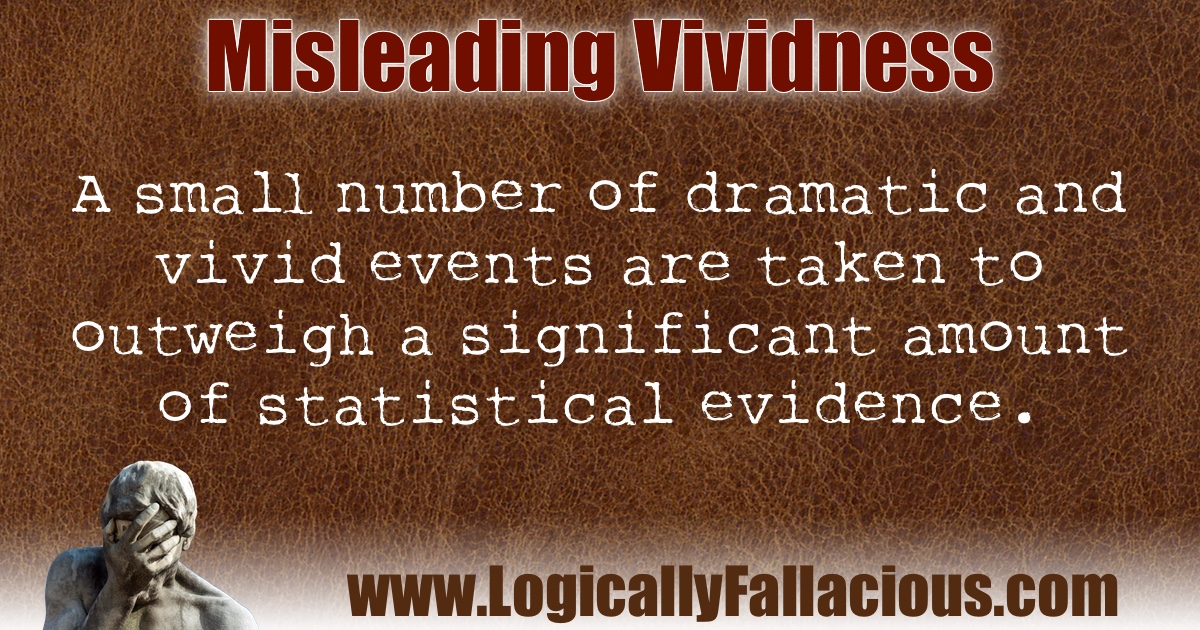Description: A small number of dramatic and vivid events are taken to outweigh a significant amount of statistical evidence.
Logical Form:
Dramatic or vivid event X occurs (does not jibe with the majority of the statistical evidence).
Therefore, events of type X are likely to occur.
Example #1:
In Detroit, there is a 10-year-old living on the street selling drugs to stay alive. In Los Angeles, a 19-year-old prostitute works the streets. America’s youth is certainly in serious trouble.
Explanation: While the stories of the 10-year-old illegal pharmacist and the 19-year-old village bicycle are certainly disturbing, they are just two specific cases out of tens of millions -- a vast majority of youth live pretty regular lives, far from being considered in any “serious trouble”. This is a form of appeal to emotion that causes us to hold irrational beliefs about a population due to a few select cases. The example could have featured two other youths:
In Detroit, there is a 10-year-old who plays the piano as beautifully as Beethoven. In Los Angeles, a 19-year-old genius is getting her PhD in nuclear physics. America’s youth is certainly something of which we can be proud.
Example #2:
It was freezing today as it was yesterday. My plants are now dead, and my birdbath turned to solid ice...and it is only October! This global warming thing is a load of crap.
Explanation: Whether global warming is a “load of crap” or not, concluding that, by a couple of unusually cold days, is fallacious reasoning at its finest.
Exception: If the cases featured are typical of the population in general, then no fallacy is committed.
Tip: Don’t let your pessimism or optimism cloud your judgments on reality.
